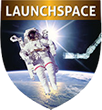Course Details
Course Summary
This is one of Launchspace’s most popular educational presentations. Contents are designed to introduce the fundamentals of spacecraft orbits and maneuvers, attitude dynamics and control, and a variety of related topics. It is highly interactive and student oriented. A great deal of information and case studies are presented. Students gain both understanding and insight regarding a basic aspect of spacecraft design and operational requirements. The material is up to date and examples are relevant to current issues for systems designers. The course content includes descriptions of satellite mission types, orbit establishment and maneuvers, attitude dynamics and control systems, attitude determination and control components and associated supporting technologies. Important relationships among dynamics, control, propulsion, and maneuvering are explained through the use of theories, applications and many examples. Basic physical and geometric principles are stressed for maximum insight and understanding. The latest advances in attitude control systems and components are discussed. Orbit propagator methods and software are reviewed. Historical and current activities are presented and compared.
Course Materials
Each attendee receives extensive notes and reference materials in soft or hard copy format.
Who Should Attend
This material is a must for spacecraft engineers, system engineers, program managers and other professionals who require a working knowledge of orbital mechanics satellite orbit and attitude control techniques and interactions among the various spacecraft systems. Anyone interested in spaceflight fundamentals, mission planning and current spaceflight developments. Educators and entrepreneurs wishing to gain insight into spaceflight technologies.
What You Will Learn
Definitions of fundamental terms associated with spacecraft dynamics and control. How orbits are established and changed. Impact of mission requirements on the selection of control system type. Differences between low-orbiting and geostationary satellite maneuvers and control requirements. Review of techniques for satellite attitude stabilization and control. How to carry out orbital and attitude maneuvers. How natural forces influence mission designs. Survey of systems that are impacted by the control systems such as propulsion, power and structure. How to compute propellant loads. Forecast of technology advances and impact of spacecraft design.
Course Outline
- Review of Fundamentals and Basic Definitions.
Basic definitions. Review of mathematical principles. Laws of Kepler and Newton. Coordinate systems and solar system geometry. Survey of space mission types.
- Fundamental Spacecraft Dynamics.
Development of the basic equations of orbital mechanics and dynamics. Fundamentals and applications of relative motion. Basic rigid body motion about the center of mass. Definitions of attitude dynamical phenomena and the rigid body equations of motion. Stability rules for a spinning satellite and energy dissipation effects. - Attitude Maneuvers for Spin-Stabilized Spacecraft.
Historical background. Momentum precession and adjustment techniques, reorientation, attitude determination and orientation acquisition requirements. Discussion of the basic inventions that shaped satellite design approaches. - Attitude Determination and Control Devices.
Survey of attitude control system types including momentum-bias, zero-momentum, and spinners. Attitude sensors and actuators. Principles of gyroscopic instruments and momentum-exchange devices. - Automatic Attitude Control.
Fundamental requirements and elements for both spin-stabilized and three-axis stabilized spacecraft. Discussion of example systems and design aspects for both types. - Special Attitude Anomalies and Maneuvering Problems.
Important attitude control anomalies in the space program. Conservation of angular momentum and momentum transformation maneuvers. - Orbital Ascent and Achievement.
How ascent burnout conditions translate into orbital parameters. Requirements for orbit establishment. - Orbital Maneuvers.
Discussion and applications of slightly eccentric orbit approximations. Single and double impulsive orbital transfers, and finite burn-time effects. Orbit plane rotation requirements. The tracking and rendezvous problem. - Orbital Propagators and Standard Software.
Numerical techniques. Integration techniques. Commercial and government orbit propagation software. - Propulsion Systems for Attitude and Orbit Maneuvers.
Survey of current and future satellite onboard propulsion devices. Fundamental relationships between maneuvers and propellant requirements. Examples. - Mission Design by Natural Influences.
Geometrical interpretation of orbital perturbation effects. Sun-synchronous and Molniya orbits. Stationkeeping in geostationary orbit. End of life maneuvers. Propulsion requirements for low-orbiting satellites.
Instructor

Dr. Marshall H. Kaplan has been teaching courses on spacecraft dynamics and control for more than four decades. His professional experience includes assignments in industry, academia and consulting. He served as Professor of Aerospace Engineering at the Pennsylvania State University and is currently a Visiting Professor of Aerospace Engineering at the University of Maryland. Dr. Kaplan is also a senior advisor on military, civil and commercial space activities to several space organizations. He was instrumental in the design and development of three-axis stabilized attitude control systems for communication satellites, and he is the author of several books including the text, "Modern Spacecraft Dynamics and Control." In recent years he has served as chief engineer on multiple space projects and as a Senior Spacecraft Systems Engineer at Johns Hopkins University’s Applied Physics Laboratory. He has written more than 200 papers, reports and articles on various aspects of astronautics. Dr. Kaplan received advanced degrees in Aeronautics and Astronautics from M.I.T. and Stanford University, and he is a Fellow of the American Institute of Aeronautics and Astronautics (AIAA) and the American Astronautical Society (AAS).
